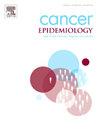Spatial and temporal dynamic of colorectal cancer mortality in Brazil: A nationwide population-based study of four decades (1980–2021)
IF 2.4
3区 医学
Q3 ONCOLOGY
引用次数: 0
Abstract
Background
Regardless of being preventable through screening strategies and prompt diagnosis, deaths from colorectal cancer (CRC) still represent a serious public health concern in Brazil, with more than 20 thousand deaths annually. Herein, we aimed to assess the temporal trends and spatiotemporal patterns of CRC mortality in all Brazilian states.
Methods
An ecological study using temporal and spatial analysis techniques on deaths due to CRC as the underlying cause in Brazil from 1980 to 2021 was conducted. Death certificate and population data were provided by the Department of Informatics of the Unified Health System (DATASUS) and by the Brazilian Institute of Geography and Statistics (IBGE), respectively.
Results
A total of 395,782 deaths from CRC were recorded in this period and most of them were in female (205,479; 51.92 %), ≥ 65 years old (233,059; 58.89 %), diagnosed with malignant neoplasm of the colon (212,277; 53.63 %), with 1–7 years of education (157.564; 39.81 %), married (192.276; 48.58 %), hospital as place of death (331.393; 83.73 %) and white (212.666; 65.07 %). Moreover, there was an increasing temporal trend in the Northeast region (APC: 2.6; p < 0.05), men (APC: 1.5; p < 0.05) and 45–64 years old (APC: 1.2; p < 0.05). Also, the spatial analysis showed positive spatial autocorrelation in all periods, with the South and Southeast regions presenting the highest concentration of high-risk clusters CRC deaths. Nevertheless, high-risk clusters were also observed in capitals and municipalities in metropolitan regions in the Northeast region.
Conclusions
In general, a temporal and spatial expansion of CRC mortality has been observed in Brazil over the last few decades.
巴西结直肠癌死亡率的时空动态:一项为期40年(1980-2021)的全国性人群研究
背景:尽管可以通过筛查策略和及时诊断来预防结直肠癌(CRC)的死亡,但在巴西,结直肠癌(CRC)的死亡仍然是一个严重的公共卫生问题,每年有超过2万人死亡。在此,我们旨在评估巴西所有州CRC死亡率的时间趋势和时空模式。方法采用时空分析技术对1980年至2021年巴西结直肠癌死亡进行生态学研究。死亡证明和人口数据分别由统一卫生系统信息部(DATASUS)和巴西地理与统计研究所(IBGE)提供。结果同期结直肠癌死亡395,782例,以女性为主(205,479例;51.92 %),≥ 65岁(233,059;58.89 %),诊断为结肠恶性肿瘤(212,277;53.63 %),1-7年学历(157.564;39.81 %),已婚(192.276;48.58 %),死亡地点为医院(331.393;83.73 %)和白色(212.666;65.07 %)。东北地区(APC: 2.6;p <; 0.05),男性(APC: 1.5;p <; 0.05),45-64岁(APC: 1.2;p & lt; 0.05)。此外,空间分析在所有时期都显示出正的空间自相关性,南部和东南部地区是高危群集CRC死亡的最高集中地。然而,在东北地区大都市地区的首都和市镇也观察到高风险聚集。总的来说,在过去的几十年里,巴西观察到CRC死亡率的时空扩展。
本文章由计算机程序翻译,如有差异,请以英文原文为准。
求助全文
约1分钟内获得全文
求助全文
来源期刊

Cancer Epidemiology
医学-肿瘤学
CiteScore
4.50
自引率
3.80%
发文量
200
审稿时长
39 days
期刊介绍:
Cancer Epidemiology is dedicated to increasing understanding about cancer causes, prevention and control. The scope of the journal embraces all aspects of cancer epidemiology including:
• Descriptive epidemiology
• Studies of risk factors for disease initiation, development and prognosis
• Screening and early detection
• Prevention and control
• Methodological issues
The journal publishes original research articles (full length and short reports), systematic reviews and meta-analyses, editorials, commentaries and letters to the editor commenting on previously published research.
 求助内容:
求助内容: 应助结果提醒方式:
应助结果提醒方式:


